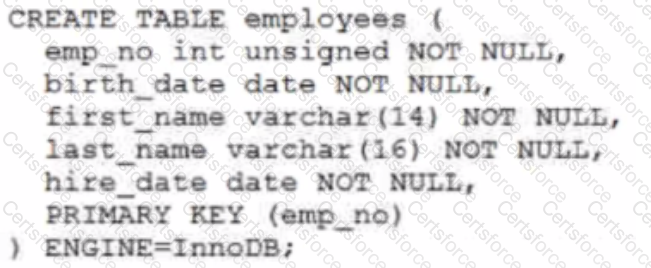Which three statements are true about MySQL replication? (Choose three.)
Examine the modified output:

Seconds_Behind_ Master value is steadily growing. What are two possible causes? (Choose two.)
Examine this statement, which executes successfully:

Now examine this query:

Which two statements can do this? (Choose two.)
Examine this list of MySQL data directory binary logs:
binlog.000001 binlog.000002
.....
binlog.000289
binlog.000300
binlog.000301
binlog.index
Now examine this command, which executes successfully:
mysqldump --delete-master-logs --all-databases > /backup/db_backup.sql
Which two are true? (Choose two.)
Binary log events for the ‘mydb1’ schema must be copied to a different schema name ‘mydb2’.
Which command will do this?
Which three are requirements for a secure MySQL Server environment? (Choose three.)
You are using mysqlcheck for server maintenance.
Which two statements are true? (Choose two.)
Which two statements are true about raw binary backups? (Choose two.)
You execute this command:
shell> mysqlpump --exclude-databases=% --users
Which statement is true?
Which two statements are true about using backups of the binary log? (Choose two.)